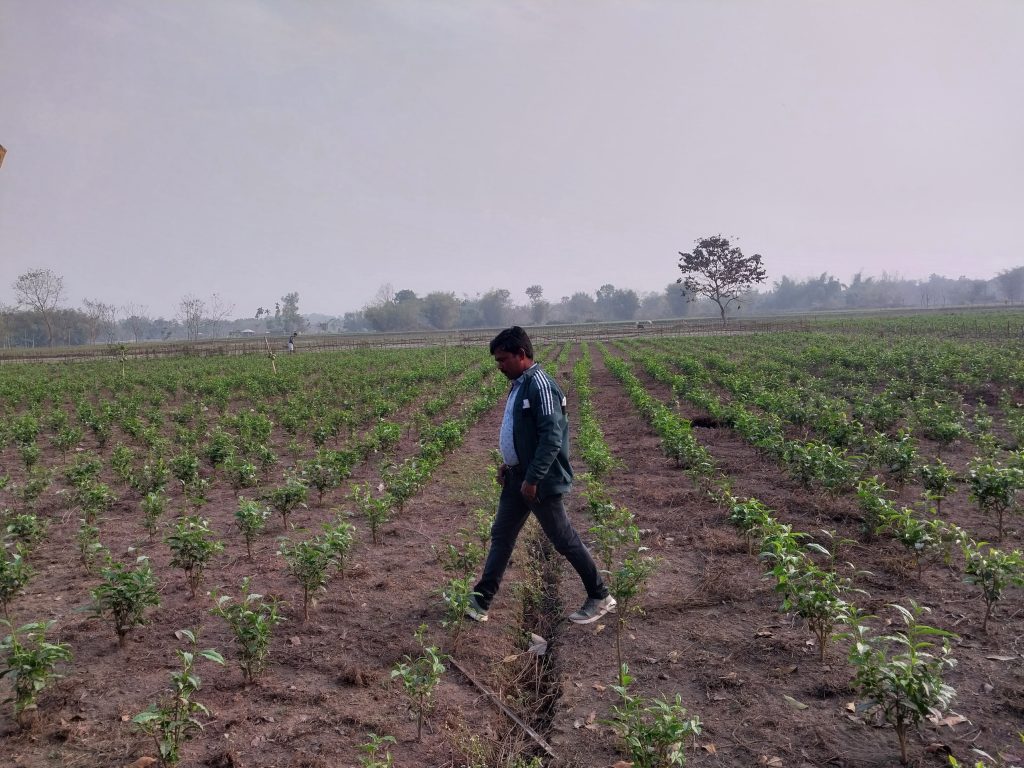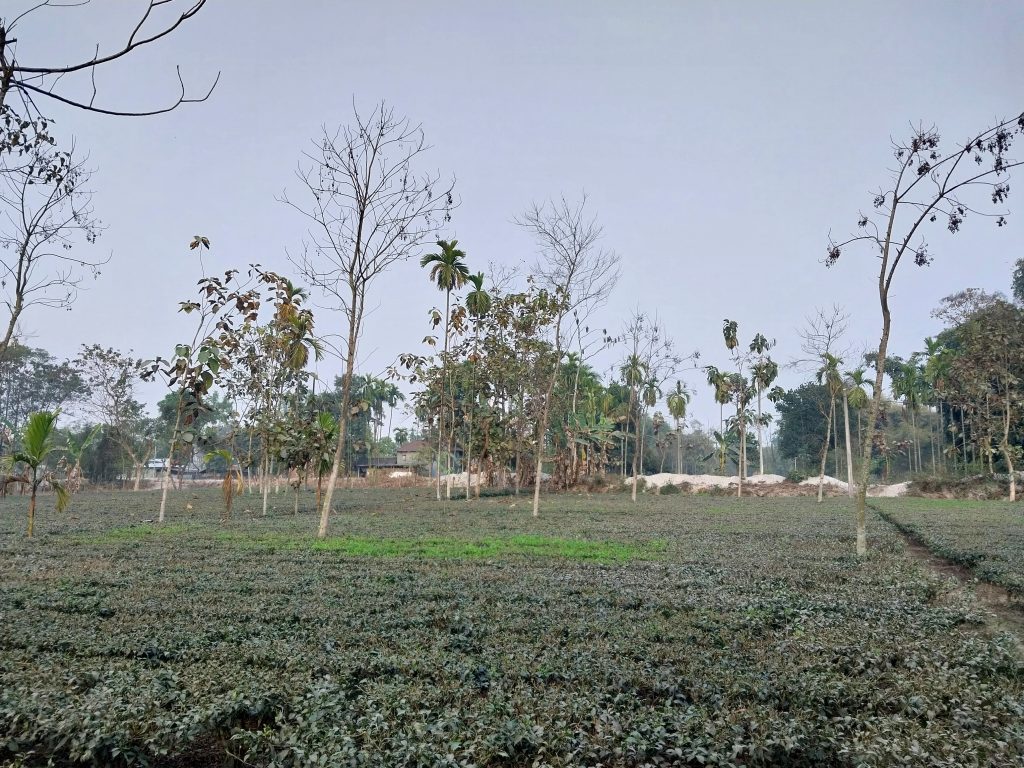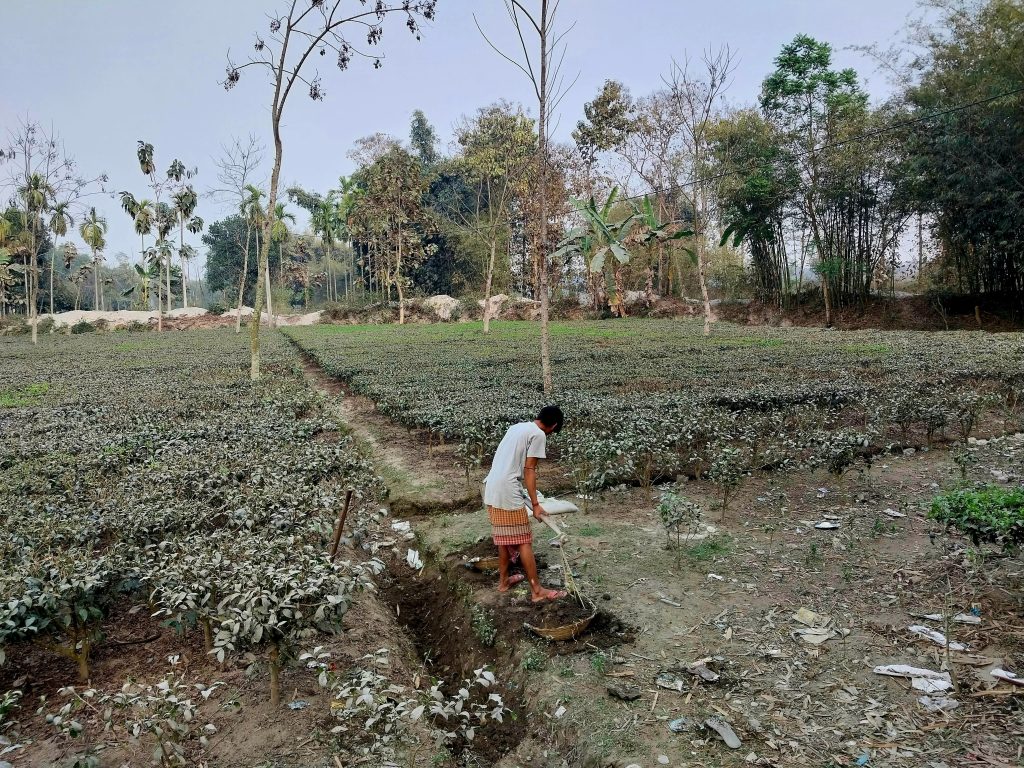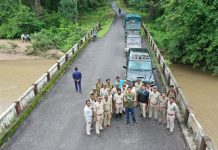A few farmers in the northern part of Bengal have shifted to tea from paddy to prevent elephant depredation. A report by Deepanwita Gita Niyogi

Across several villages of Jalpaiguri district in West Bengal, which lies in the beautiful Dooars region, elephant depredation is a major issue, keeping farmers on their toes. They are forced to guard their crops, especially paddy, from makeshift structures made of bamboo and wood.
Paddy is the dominant crop of West Bengal, favoured by fertile soil and adequate water availability. Its cultural significance in the state is also huge. The harvest festival of Nabanna, celebrated during November-December, is popular among paddy farmers.
“Generally, farmers of my village Nodhabari and others nearby are used to paddy cultivation, but a few among us are now experimenting with tea. This is because elephants have a taste for paddy and often raid our fields,” farmer Lonkeshwar Ray said.
Shift towards tea
West Bengal forest department officer Chiranjit Paul explained that the cultivation pattern in many villages in this region is veering towards tea for protection from elephants, crop loss reduction and higher profits. “It is a major change, with approximately 50 to 60 percent of the landscape transformed in a few years.”
However, at times elephants also enter tea gardens for passage. This is because the entire north Bengal has become highly fragmented due to land use changes and developmental activities.
Lonkeshwar has started growing tea which is giving better profit compared to paddy cultivated twice a year. However, he admitted to facing water shortage in tea cultivation. Water is supplied through a canal from the Teesta river. His tea garden area is spread over a bigha (0.625 acres).
Nodhabari comes under the Belakoba range known for a high degree of human-elephant conflict. In another range called Diana, about an hour’s drive from Jalpaiguri district of West Bengal and close to the Bhutan border, forest ranger Ashes Paul too informed that elephant conflict is high.

In several villages in the Diana range, safety measures have been put in place. When the animals usually appear in the evening, special teams track them to ensure the safety of the local populace.
Regular awareness campaigns are organised in the villages that come under the Diana range. Solar fences and watch towers have also been set up. The total number of affected villages is 10-12, and of this, four to five are highly impacted.
Tea is the dominant crop in the entire Diana range. Here, nine to ten commercial estates span acres. “The forest department keeps a close relation with tea gardens who inform us about elephant movement. Estate managers help us to drive away the animals,” Paul added.
In the Diana range, there are three elephant corridors: Reiti-Diana, Moraghat-Diana and Gorumara-Diana. Due to human habitations, these corridors are conflict-ridden. Paul has deployed the Mumbai-based Spenta Aid Foundation to deal with the crisis.

“Though there are squads to handle any conflict situation, often reports of conflict pour in from two to three areas at a time. So, non-profits working here is a boon,” the ranger added.
Better profits
In a village called Shitaipara in Jalpaiguri, Rajesh Roy’s tea garden is spread over four bighas (2.48 acres).
Like Lonkeshwar, Rajesh is also a small-time tea grower. On an afternoon, he was spotted weighing tea leaves and loading them on a vehicle on the roadside.
“I get a good income from selling tea leaves. Paddy used to get me Rs 50,000 annually. In its place, tea ensures Rs 2 to 3 lakh a year.” It has been about two years since he has been growing tea.
But then Rajesh admitted that he was also somewhat forced into tea cultivation. “When other farmers converted their lands to grow tea, I too was forced into it due to the drains created for water flow and drainage. Paddy could not have been supported anymore as the land could not hold water.”
Along with Jalpaiguri, Alipurduar and Darjeeling are also famous for tea gardens. Many people in these districts situated in the northern part of West Bengal depend on the tea industry, either directly or indirectly. The first two districts are in Doors, the foothills of the eastern Himalayas.
Even though small-scale farmers like Lonkeshwar and Rajesh have switched over to tea, there are issues galore in the tea industry, especially the commercial estates.
A local source working with a non-profit explained that when tea gardens close, the income of families declines and workers are suddenly rendered jobless.
“Some borrow money, go abroad, work for a few years there and then return. There is migration, and with it, a disruption in the social order after the gardens close down. The daily routine breaks.”












